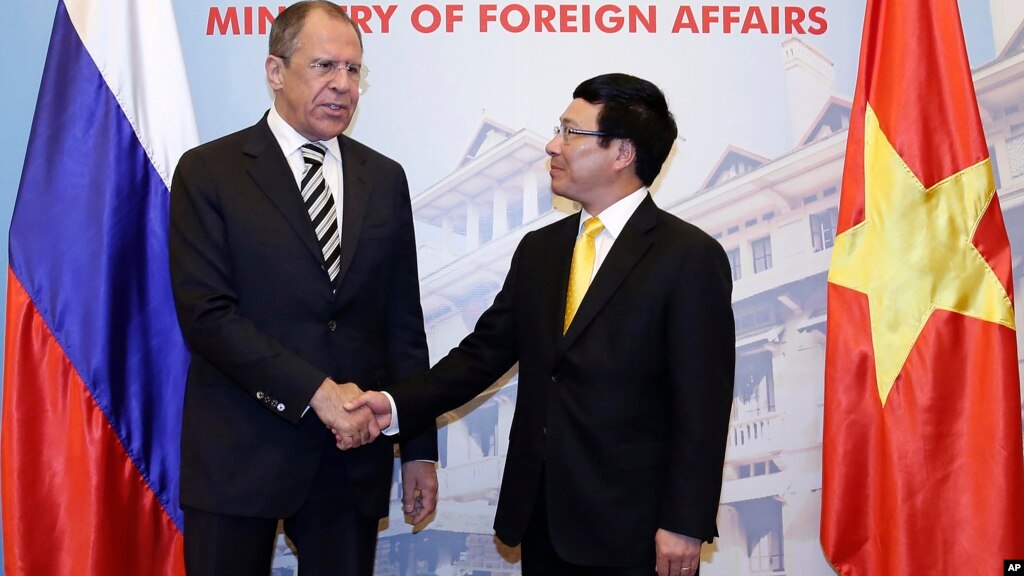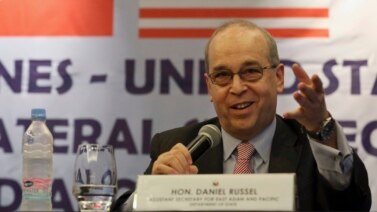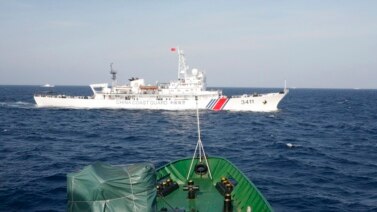
The United States embassy in Hanoi has asked the Vietnamese government to stop permitting Russia to use a military base to refuel its airplanes. The U.S. says Russia has performed what it calls “ provocative flights” around the U.S. territory in the Pacific. Officials have not received an answer from the Vietnamese government.
Lisa Wishman is an embassy official in Vietnam. She told VOA on Thursday that the U.S. communicated its concerns privately to the Vietnamese government last week. She says that the U.S. government respects Vietnam's right to enter agreements with other countries. But she adds that the U.S. does not want Vietnam to permit the Russian military to use Cam Ranh Bay to “conduct activities that could raise tensions in the region."
The former U.S. base is 290 kilometers northeast of Ho Chi Minh City, formerly known as Saigon. It is a natural deep-water harbor.
Vincent Brooks is the commanding general of the U.S. Army Pacific. He told Reuters news agency on Wednesday that Russian planes had carried out "provocative" flights. These include flights over areas around the U.S. territory of Guam, which is 4,000 kilometers east of Vietnam.
NATO officials say Russian aircraft have been seen recently over the English Channel. Officials say Russia’s military is carrying out more aggressive air and sea patrols close to borders of NATO countries.
Russia also announced last November that it planned to send long-range aircraft over North American waters. News reports say the Russian military has begun military exercises in southern Russia and in Crimea.
The United States fought the North Vietnamese from the early 1960s until the American withdrawal in 1973. The South Vietnamese government in Saigon came under North Vietnamese control two years later.
Diplomatic ties between Vietnam and the United States were established in 1995. The two countries have developed closer ties in recent years because Vietnam worries about the threat posed by its huge neighbor to the north, China.
China once controlled parts of Vietnam for hundreds of years. The two countries fought their most recent border war in 1979. About 30,000 soldiers on both sides died during the short conflict. The two countries have an ongoing dispute over territory in the South China Sea.
In 2013, U.S. Secretary of State John Kerry announced a plan to help Vietnam strengthen its sea security. The United States agreed to provide at least five modern patrol ships to Vietnam.
Ted Osius is the U.S. Ambassador to Vietnam. He recently spoke at Hanoi University to express understanding that Vietnam would look to "historic partners" for security. But he says the United States also had, in his words, "much to offer to enhance Vietnam's security in the short, medium and long term."
I’m Jonathan Evans.
Steve Herman reported this story from Bangkok. Jonathan Evans wrote it for Learning English. Mario Ritter was the editor.
Words in This Story
aggressive – adj. ready and willing to fight, argue, etc.; feeling or showing aggression
patrol – n. a group of people, vehicles, etc., that go through an area to make sure that it is safe; a group that patrols an area
provocative – adj. causing discussion, thought, argument, etc.
withdrawal – n. an act of moving something away or taking something away


